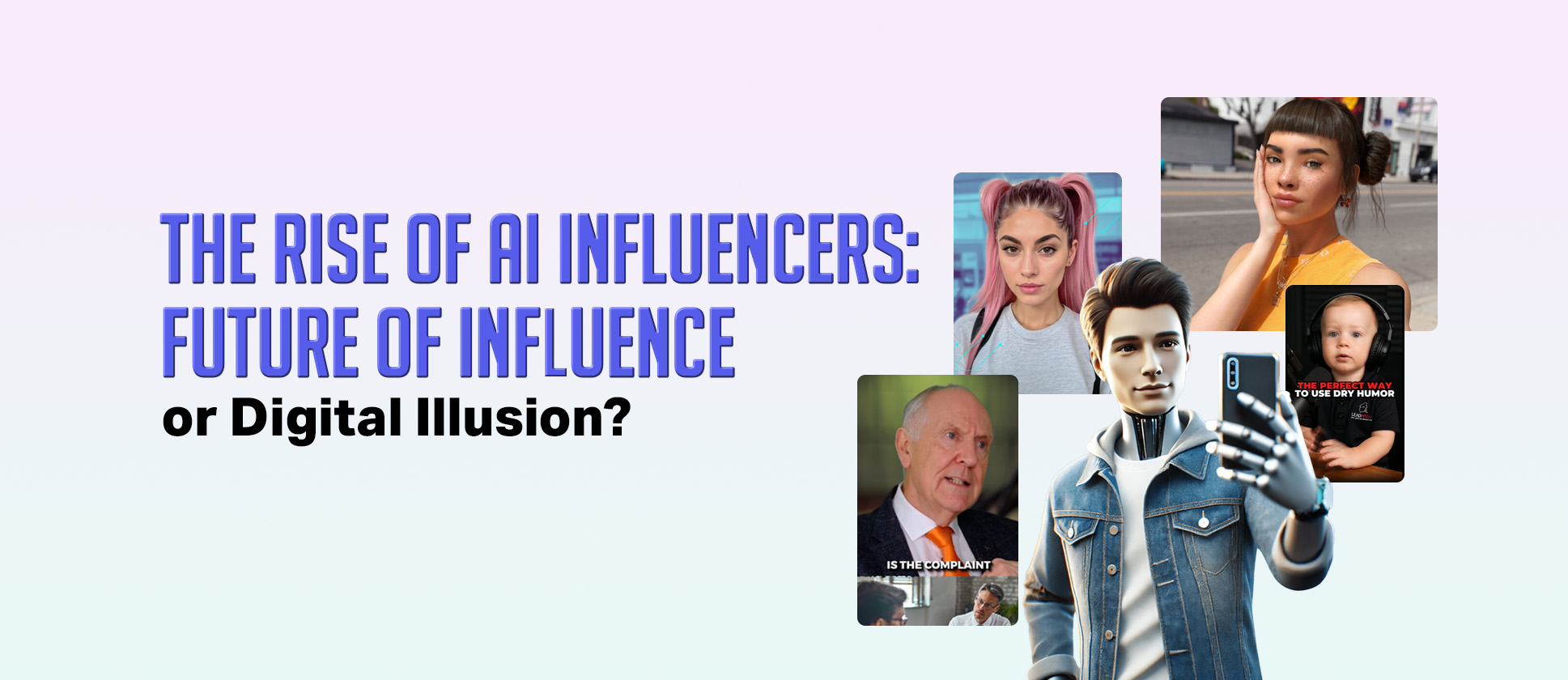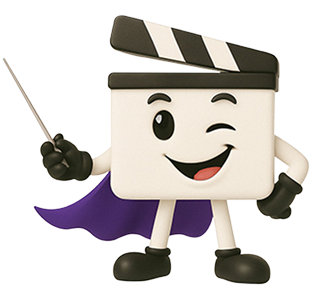You know those influencers who always look flawless? Like Lil Miquela with her perfect streetwear style, or Aitana Lopez, that pink-haired Spanish model who makes bank just by posting? She’s pulling in over 10 grand a month, by the way. They post selfies, partner with huge brands, and share their lives just like any other influencer. But here’s the thing: they’re not actually people. Nope, they’re synthetic influencers, digital characters built entirely by AI.
And in 2026, this isn’t some far-off idea. It’s happening right now. According to What’s Big Data, 71% of brands think AI Influencers can provide a higher ROI compared to human influencers. News channels are using them. Governments are testing them. Brands are totally obsessed. I get the appeal, they’re available 24/7, they never mess up, and they always stay on-brand. But it does make you wonder… is this the cool new future of marketing, or are we trading real human connection for something that’s just a little too… perfect?
In this blog, we’ll dive into the real impact of AI influencers, from their game-changing benefits to the serious ethical questions we can’t ignore.
What Exactly is a Synthetic Influencer?
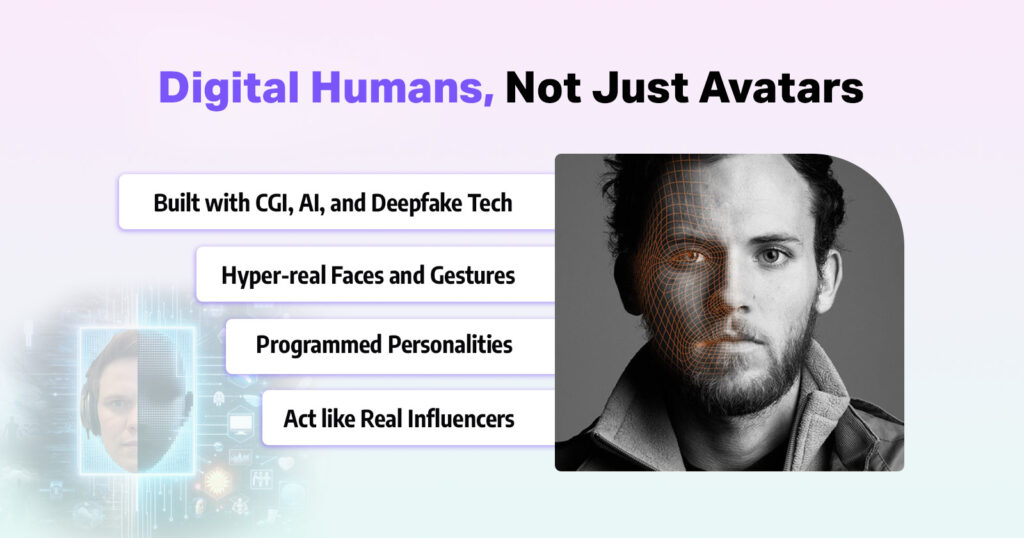
Think of them as highly polished digital humans. Not cartoons, not basic avatars, but hyper-realistic personalities created using CGI, deepfake tech, and voice cloning. Behind the scenes, you’ve got 3D modeling software crafting lifelike faces and bodies, AI models generating expressions and gestures, and cloned voices giving them personality. Put it all together, and you get a “person” that looks, talks, and acts like any Social Media Influencer in 2026, but without ever being human.
Why Marketers Are Racing to Use AI Influencers
Marketers are buzzing about the rise of synthetic influencers, and honestly, it’s easy to see why. Sure, human creators bring relatability and real stories, but when you compare them side by side with AI influencers, the advantages are hard to ignore.
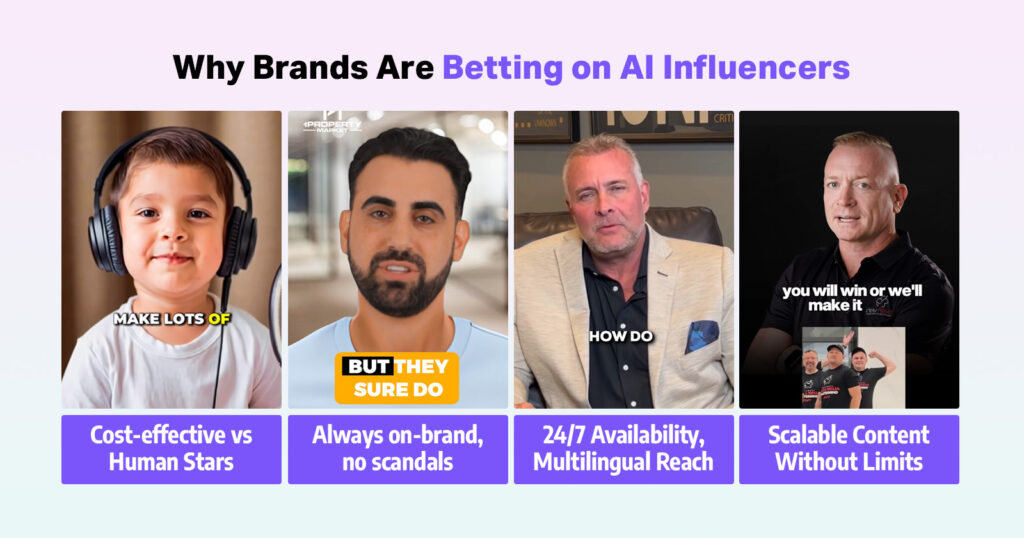
Cost-Effective Scaling Without Human Limits
Let’s be real: human mega-influencers charge eye-watering fees. One sponsored post from big influencers and Personal Brands like Kylie Jenner can cost over $1 million. Compare that to Lil Miquela, the virtual influencer who’s worked with Prada and Calvin Klein. She has millions of followers, but because she’s computer-generated, she doesn’t demand bigger contracts every year. You pay the creation cost once, and she keeps delivering.
Here’s a quick look at how the money stacks up:
| Type of Influencer | Cost-Per Campaign | Long-Term Expense | Hidden Costs |
|---|---|---|---|
| AI Influencers | $5k–$50k creation | Predictable, scalable | Occasional software updates |
| Human Influencers | $50k–$500k+ | Increases over time | Travel, styling, production, negotiations |
Imagine your computer-generated influencer shooting a campaign in Tokyo in the morning, posting in New York by evening, and speaking flawless Japanese, Spanish, or English. Humans can’t do that.
Brand-Safe, Scalable, and Fully Customizable
Humans are unpredictable. One tweet, one scandal, and your brand’s in trouble. With virtual influencers like Shudu, the world’s first digital supermodel, you control every detail: her look, her values, her words. Want her modeling Dior today and attending a digital event in Paris tomorrow? Done. No scheduling nightmares, no bad press.
Data-Driven Performance That Converts
Here’s the kicker: AI influencers don’t just create content, they optimize it. Tools behind them test captions, analyze audience data, and tweak posting schedules automatically. Take Imma, Japan’s pink-haired digital influencer. Her team uses AI analytics to keep Engagement consistently high. It’s not luck, it’s math.
The Hidden Benefits Marketers Love
Marketers rave about the benefits of virtual influencers:
- Consistency, never aging, never off-brand
- Creative freedom, put them in space, underwater, or on Mars
- Multi-channel scaling, TikTok, Instagram, and YouTube all at once
- Endless content production at lightning speed
Synthetic Influencers in Action: Real-World Examples
This isn’t some “sci-fi coming soon” prediction; it’s happening now, across industries you probably didn’t expect.
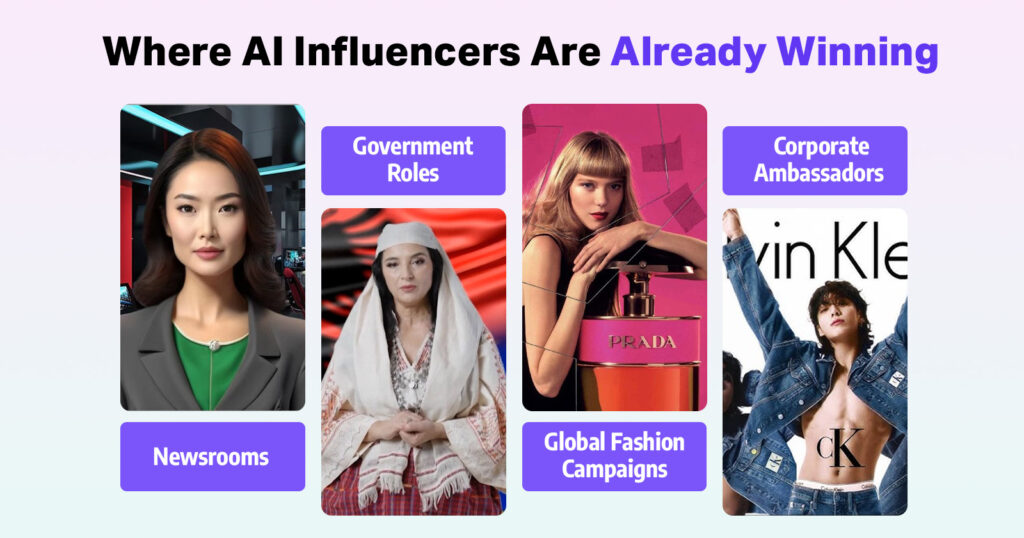
AI News Anchors: Always on the Clock
The news business is one of the first to dive in. In India, Sana, an AI anchor, is grabbing attention with her smooth delivery and polished presentation. She doesn’t forget lines, doesn’t tire, and can keep broadcasting 24/7. Indonesia has already gone further, introducing Nadira, Sasya, and Bhoomi, three AI anchors hosting news shows as if they’d been doing it for years.
And it doesn’t stop there. A startup called Channel 1 is trying to reinvent the TV newsroom entirely by creating full shows run by AI avatars. These avatars are trained to read the news like pros, and they can adapt on the fly, making them cheaper, faster, and way more scalable than human presenters.
Albania’s AI Minister
Governments aren’t standing on the sidelines either. Albania made global headlines when it introduced Diella, an AI “Minister of State for AI.” Her main assignment? Oversee procurement and ensure government tenders are corruption-free. She even made her debut as a hologram in parliament. Sure, critics argued it was unconstitutional, but others saw it as a bold leap into the future. Either way, Albania has shown the world that synthetic leaders aren’t just a theory; they can hold real power.
Corporate AI Brand Ambassadors
Now let’s talk about where synthetic influencers shine the brightest, branding and Marketing. Big companies have already embraced them, and here are some standouts:
- Lil Miquela: The most famous virtual influencer, with millions of followers, has collaborated with Prada and starred in a Calvin Klein campaign.
- Shudu: Known as the world’s first digital supermodel, she’s booked campaigns with luxury labels that most human models would dream of.
- Imma (Japan): A pink-haired digital influencer who has worked with cutting-edge brands and turned into a fashion icon in Asia.
- Noonoouri (Paris): A CGI character with a bold personality, who’s partnered with Dior and Marc Jacobs.
The Dark Side of Perfection: Drawbacks of Relying on AI Influencers
Alright, so AI influencers sound pretty amazing on paper, don’t they? Perfect looks, always on time, and no personal drama. But let’s pull back the curtain for a second. This shiny, new trend has some pretty big problems we can’t just sweep under the rug.
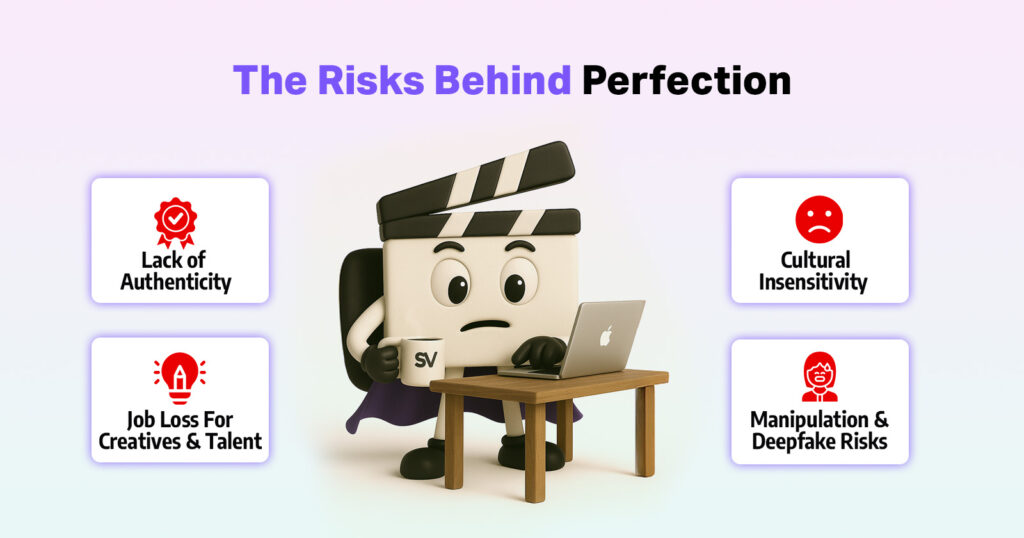
The Authenticity Problem
Think about why you actually follow someone online. It’s not just the pretty pictures, it’s the real, messy, human stories behind them. The bad hair days, the honest struggles, the genuine laughs. That’s what builds a real connection. Now, try to get that from an influencer who is, well, a bunch of code. Their “bad day” was written by a writer. Their “joy” is programmed. After a while, that perfect facade starts to feel hollow, and people can smell that fakeness from a mile away.
Job Displacement in the Digital Economy
Here’s the uncomfortable truth: if a company can pay for an AI model once and use it forever, why would they keep hiring real people? We’re talking about models, photographers, makeup artists, and videographers. Their jobs are suddenly on the line, competing against digital avatars that don’t need lunch breaks or paychecks. It’s not a future worry; it’s happening now, while it does make Marketing more Affordable, but it is putting real livelihoods at risk.
The Risk of Manipulation
This is where it gets a bit scary. The same tech that creates a charming AI influencer can also be used to create deepfakes or spread misinformation. What if a seemingly trustworthy AI star starts pushing fake news or shady products? And imagine how betrayed fans would feel if they found out the person they trusted was never a person at all. That broken trust is incredibly hard to repair.
Cultural Blind Spots
Real humans understand subtle cultural cues and nuances. AI? Not so much. We’ve already seen cases where virtual influencers accidentally promoted stereotypes or completely missed the mark in different countries. A joke that works in one culture might be deeply offensive in another. A human can sense that; an AI just follows its programming, which can lead to some serious and expensive PR disasters.
Legal and Ethical Grey Areas
And here’s the biggest headache: the rules for this are still being written. Who is responsible if an AI influencer says something terrible? The brand that owns it? The programmers? Right now, it’s a legal mess. It’s like the wild west of marketing, full of opportunity, but also full of hidden dangers waiting to explode.
So yes, AI influencers are innovative. But behind all that high-tech glamour, there are some very real risks that brands need to think about carefully.
The Tools Powering the Rise of Synthetic Influencers
Behind the polished posts and perfectly curated feeds, there’s a wave of tech making it all possible. The rise of synthetic influencers isn’t just about creativity; it’s about the platforms that allow brands to generate human-like content at scale. And the truth is, these tools are becoming so good that you can’t always tell the difference between real and computer-generated influencers.
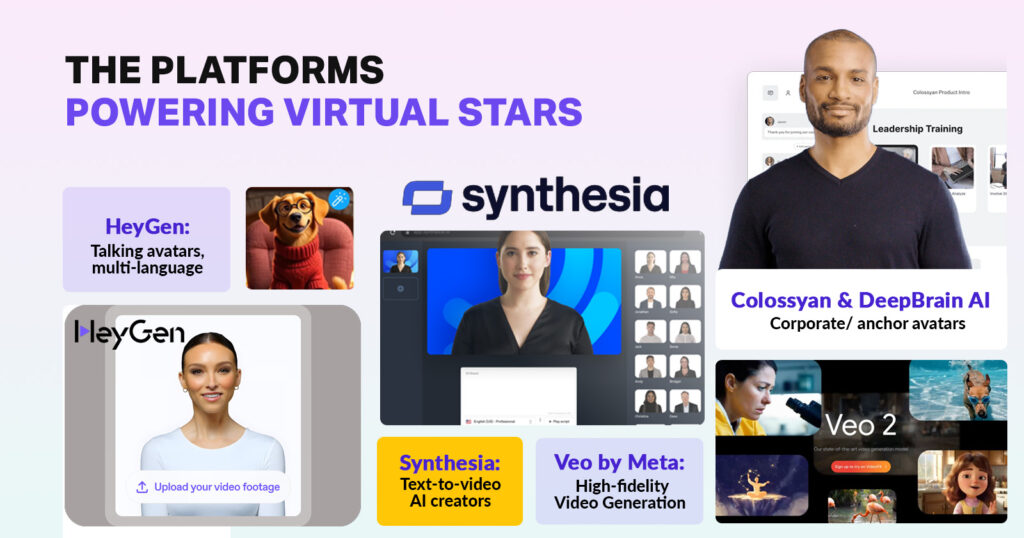
AI Video Generator Tools for Synthetic Influencers
AI Video Generator Tools are transforming how brands create human-like avatars and synthetic influencer content. These platforms allow brands and creators to do Content Creation more rapidly and produce engaging, scalable content that connects globally without traditional production limits. Below are some leading platforms shaping this space:
- HeyGen: Creates realistic talking avatars, supports multi-language voice sync, and lets users produce personal or branded AI spokesperson videos quickly.
- Synthesia: Specializes in text-to-video conversion using digital avatars, ideal for training, marketing, and global communication content.
- Meta AI Veo: Focuses on high-fidelity video generation, offering detailed control over avatar movements and voice, making it suitable for cinematic and advertising work.
- DeepBrain AI: Offers AI human avatars that can act as digital news anchors or customer support, generating lifelike videos from scripts.
- Colossyan: Enables easy creation of explainer or corporate videos using customizable avatars, with templates catered to business needs.
Game-Changing AI Platforms
Platforms like HeyGen, Veo, and Synthesia are leading the charge. They let creators animate faces, sync voices, and produce avatars that can speak any language on demand. For brands, this means global reach with minimal effort. Want to launch a Marketing Campaign in five countries at once? These platforms make it possible.
ShortVids + HeyGen
At ShortVids, we don’t just talk about AI video tools; we put them to work for our clients. Take Colin Matthew, for example. Colin is a founder of Freedom Funders. He helps businesses get funding and also does Credit Repair. He needed a way to scale his content without burning out. Using HeyGen, we helped him create polished, multilingual videos that could run across different channels at once. Instead of spending weeks producing variations, Colin had fresh content ready in days. That’s the power of mixing AI with Content Creation and also leveraging our editing expertise.
Human vs AI Influence: Who Really Wins?
When it comes to influence, people always ask the same question: who’s better, human influencers or AI influencers? The truth is, both bring something special to the table. Humans connect through feelings and real-life experiences, while AI influencers offer speed, consistency, and scale. Let’s break it down.
| Factor | Human Influencers | AI Influencers |
|---|---|---|
| Connection | Build trust through real stories and emotions | Feel real, but lack true emotions |
| Consistency | Can miss deadlines or burn out | Always on-brand, never tired |
| Cost | Often expensive (management, shoots, collabs) | Lower long-term cost once created |
| Relatability | Show flaws, struggles, and wins people relate to | Perfectly polished but sometimes too “unreal” |
| Scalability | Limited by time and energy | Can create unlimited content instantly |
In the end, humans win with emotions. Their honesty, flaws, and lived experiences make them relatable in a way no algorithm can replicate. AI, on the other hand, wins with speed and scale, Creating Endless Content without breaks or burnout. The smartest brands won’t see this as a choice between the two. Instead, they’ll use both, blending the human heart with AI efficiency to create influence that connects deeply while reaching further than ever before.
Why ShortVids AI Creation Is a Game-Changer for Your Brand
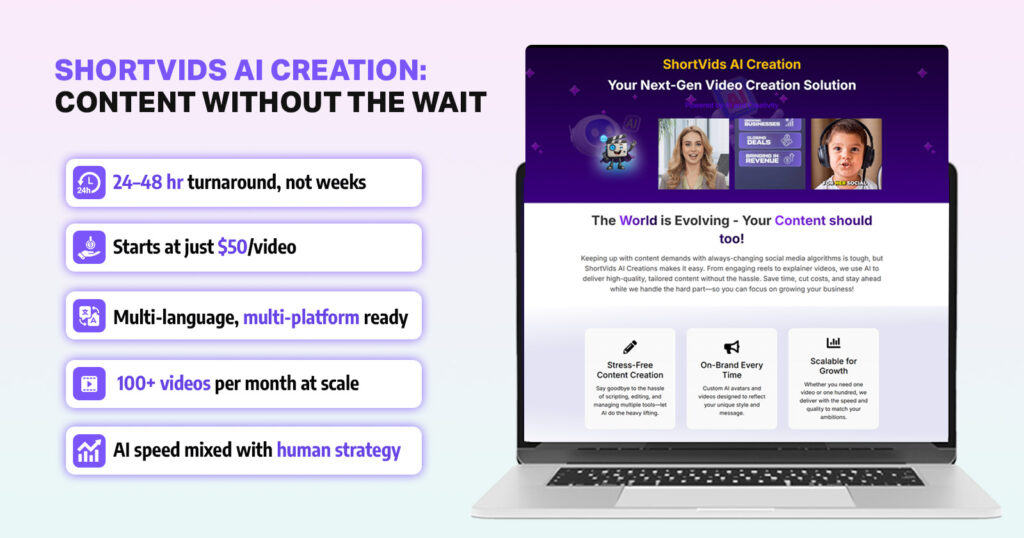
If you’ve ever tried to keep up with content, you know the pain. Shoots get delayed, Freelancers Disappear, edits drag on for weeks, and by the time the video is ready, the trend has already died. Frustrating, right? That’s exactly why we built ShortVids AI Creation (SAC): to make content fast, stress-free, and scalable.
With SAC, you’re not waiting weeks. You’re getting professional, ready-to-post videos in 24–48 hours. Want 10 variations of the same ad for testing? Easy. Need content in multiple languages to reach new audiences? Done. And here’s the amazing part: you don’t need a massive budget. Videos start at just $50.
SAC vs. The Old Way
| Feature | ShortVids AI Creation | Traditional Creation | Freelancers |
|---|---|---|---|
| Turnaround Time | 24–48 hours | 7–10 days | 5–14 days |
| Cost per Video | From $50 | $200–$500+ | $100–$300 |
| Scalability | 100+ videos/month | 10–20 videos/month | 5–10/month |
| Consistency | Always polished | Varies by team | Hit or miss |
The best part? We don’t just churn out AI videos. We mix AI speed with human strategy, so every video works for your brand. That’s why creators like Colin partner with us; we helped him scale content fast without losing quality.
Future Predictions: What’s Next?
Looking forward, it’s not “AI vs humans.” It’s humans and AI.
Hybrid Influencer Models
Creators are already building AI “doubles” of themselves. These digital twins can post in different languages or run parallel campaigns while the real person focuses on life.
Regulation and New Careers
Governments are pushing for AI-labeling rules. Social platforms like Instagram and YouTube are testing ways to mark AI-generated content. And new jobs are popping up: AI personality designers, digital ethics consultants, synthetic media managers.
The Balance
At the end of the day, the rise of Synthetic Influencers doesn’t mean humans are out. It means the smartest brands will know when to use virtual influencers for scale and when to lean on humans for authenticity.
YouTube’s AI Demonetization Of AI Influencers
YouTube recently began Demonetizing AI-generated videos that are highly repetitive or lack human originality, making it tougher for “faceless” AI influencers to profit without real creative input. This shift is not a blanket ban but means synthetic influencers must add value or commentary for their work to be Monetized, accelerating demand for new careers like AI personality designers and synthetic media managers.
Conclusion
Frequently Asked Questions
No, AI influencers are fully computer-generated characters, but they’re designed to look and act like real humans online.
They earn through brand deals, sponsorships, ad campaigns, and sometimes even by selling digital products.
Yes, some AI influencers like Lil Miquela and Imma have millions of followers who engage with their content daily.
The main risks are a lack of authenticity, possible misinformation, and reduced trust if audiences discover they aren’t human.
Book a Call Today
- Fixed monthly plans starting at $999
- 24-hour turnaround time (or less) on all short-form edits
- 3-layer quality check system on every video
- No more chasing freelancers or managing editors
- Scale up to 50+ videos/month without hiring in-house
- Content team trained on platform trends, scroll-stopping hooks & storytelling
- Fully managed by professionals – you just upload & approve
- Response time: Under 1 hour (US & GCC time zones)
Cut your production costs, not your standards.

